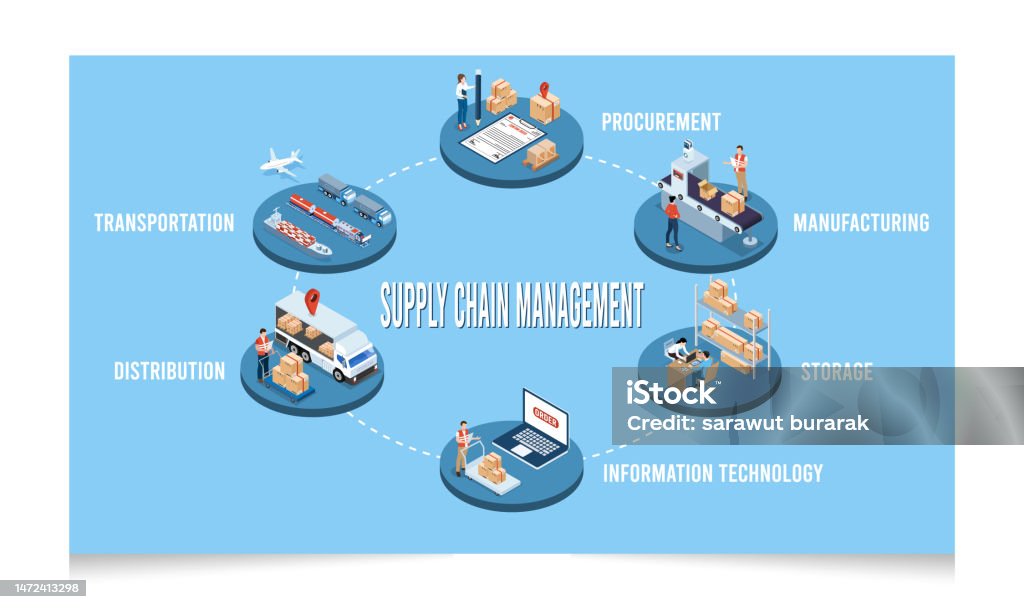Did you know that 68% of computer applications use open-source software libraries without the company’s knowledge, according to CSO? There’s also an increase in supply chain threats, making you more vulnerable.
It’s impossible to overestimate the significance of cybersecurity supply chain risk management in the modern digital environment.
Besides, today, supply chains are interconnected across enormous networks and systems. Thus, businesses should implement comprehensive cybersecurity strategies to protect themselves from attacks and vulnerabilities.
And if you don’t know how, here are five essential tactics to strengthen your defenses and successfully reduce risks.

1. Thorough Vendor Evaluation
Assess your suppliers and vendors thoroughly. This process includes examining their cybersecurity procedures. Evaluate their data security protocols, vulnerability management plans, and adherence to industry rules.
Before integrating new partners into your supply chain, properly screen them to find any flaws or vulnerabilities in their cybersecurity supply chain risk management procedures. The assessments don’t have to be complex. They could be as simple as assessing their personnel training initiatives.
Check their patch management protocols, access controls, and encryption techniques. If need be, also consider carrying out virtual audits. On-site inspections can give you a more profound understanding of your vendors’ security procedures and infrastructure.
You aim to seal loopholes through which trouble can enter your supply chain risk management system. Avoid vendors whose cybersecurity game is below average, as they could expose your entire supply chain to risks.
2. Build Honest Supplier Relationships
Once you’re sure your vendors have cybersecurity-safe policies, it’s time to encourage honesty. Open and cooperative supplier relationships are essential for effective cybersecurity risk management. Establish channels of communication for sharing cybersecurity knowledge and best practices.
Encourage your suppliers to disclose any security events or vulnerabilities swiftly. Also, give them the tools and resources to deal with these problems.
Providing your suppliers with cybersecurity risk intelligence and insights is another way to promote openness and cooperation. By so doing, you enable them to improve the security of shared assets in the supply chain. You empower them to fortify supply chain systems from cybersecurity risks and vulnerabilities.

3. Enforce Tight Contractual Requirements
It’s not enough that your suppliers know that cybersecurity risks lurk throughout the supply chain systems. Enforce contractual agreements that explicitly define your cybersecurity criteria. This is a clever strategy to hold suppliers and contractors responsible for upholding appropriate security standards.
Security requirements and expectations, such as data protection measures, incident response protocols, and compliance with applicable laws and standards, should be pre-conditions for contracting suppliers.
Ensure contracts have clauses spelling out regular reporting obligations, compliance evaluations, and security audits. Clearly define the repercussions of breaking security protocols. It could be contract termination or monetary fines.
This way, you reduce the risks of supply chain disruptions caused by security breaches. You encourage suppliers to prioritize cybersecurity, which also guarantees your safety.
4. Maintain Real-time Cybersecurity Threat Detection
Constantly monitor your supply chain system. Constant monitoring will help you detect threats and respond to them in real-time. Install avant-garde technologies and tools for continuous network traffic, system logs, and user activity monitoring.
Using these technologies, you can spot any unusual activity. You can effortlessly identify security breaches and take prompt action to reduce risks.
Include threat intelligence sources in your cybersecurity plan. These sources can give you important insights into new threats and attack patterns.

Threat intelligence platforms, information-sharing initiatives, and subscribing to threat intelligence feeds could also enhance the safety of your supply chain systems. These tools act like your chief investigators—always identifying and sharing anything out of the norm.
5. Create Sturdy Backup Plans
You could take the greatest precautions to avoid cybersecurity events. Supply chain hacks could still happen. It is imperative to have resilient contingency plans and incident response procedures. These can mitigate the consequences of such occurrences and promptly restore regular operations.
Follow the detailed steps for handling security breach response. Your contingency plan should include event identification, containment, eradication, recovery, and post-incident analysis. Assign important stakeholders in your organization duties and responsibilities. And create effective channels of communication to coordinate response actions.
Further, test and update your backup plans regularly. Tabletop exercises and simulated cyberattack situations are effective testers. Doing this certifies that your response protocols work and that your staff can handle security issues.

Final Thoughts
A diverse cybersecurity supply chain risk management strategy is valuable. Such a strategy considers different facets of security along the supply chain.
As elaborated above, you can effectively strengthen your defenses and mitigate cybersecurity risks by enforcing strict contractual obligations as a business. Implementing thorough vendor assessments and fostering transparent supplier relationships is a proactive strategy against supply chain management systems cybersecurity risks.
Yet again, continuously monitoring systems for threats and developing robust contingency plans can help you track and address anomalies. Above all, remember that in today’s connected digital world, proactive risk management is crucial to protecting your company’s resources, reputation, and clientele.





Comments